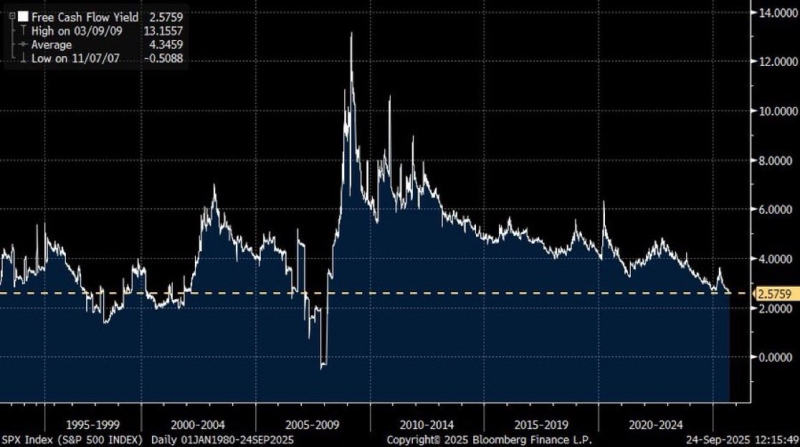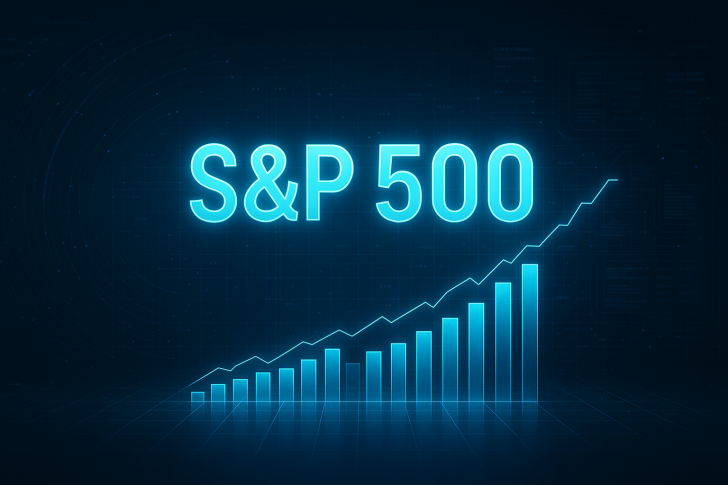Wall Street is showing another warning sign. The S&P 500's free cash flow yield has fallen to its lowest point since before the 2008 financial crisis, prompting serious questions about whether U.S. stocks are becoming dangerously overpriced.
The Warning Signal
According to a recent analysis from Barchart, the S&P 500 free cash flow yield has dropped sharply. This important metric measures how much cash companies actually generate compared to their market value, giving investors a reality check on whether stocks are truly cheap or expensive. At just 2.58%, it's sitting well below the historical average of 3.45%. Past experience tells us that when this number gets this low, markets often become unstable or economic problems emerge.

The chart reveals three important patterns. Back in 2009 during the financial crisis, the yield jumped to 13% as stock prices crashed. Since then, we've watched it steadily decline as stock prices climbed faster than companies could grow their actual cash generation. Now it's back down to 2.58%, almost identical to where it was in 2007 right before everything fell apart.
Why This Is Happening
A few factors are driving yields lower. Stock prices have surged through 2024 and into 2025, which automatically pushes yields down. Meanwhile, companies are facing real pressure on their profit margins from slower economic growth, expensive borrowing costs, and higher wages eating into their bottom lines. On top of that, investors keep pouring money into stocks regardless of the warning signs, keeping prices artificially high despite growing economic uncertainty.
What It Means Going Forward
When free cash flow yield drops this low, it means stocks are priced assuming everything will go perfectly. There's almost no safety margin if companies start missing their earnings targets. Investors should expect higher volatility if growth disappoints, with well-run companies that have strong balance sheets and consistent cash flows likely to hold up better than the rest. The market has also become extremely sensitive to economic news, where even small shocks could trigger sharp sell-offs.
The bottom line is clear: the latest drop shows how little room for error remains in U.S. stock valuations. With prices stretched thin and companies struggling to generate cash, the S&P 500 may be entering a risky period. For anyone investing for the long haul, this serves as an important reminder that fundamentals still matter, and history teaches us that when yields compress this much, things rarely end smoothly.
 Peter Smith
Peter Smith

 Peter Smith
Peter Smith


